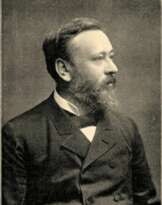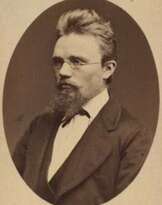Johannes Bosboom (1817 - 1891)

Johannes Bosboom
Johannes Bosboom was a Dutch painter and watercolorist of the Hague School, known especially for his paintings of church interiors. At the age of 14 he became a student of Bartholomeus van Hove and painted in his studio along with Van Hove's son Hubertus van Hove. Together they worked on the pieces of scenery that Van Hove created for the Royal Theatre in The Hague. The young Bosboom traveled to Germany in 1835 to Düsseldorf, Cologne and Koblenz and painted the watercolor View of the Mosel Bridge at Koblenz. In 1839 he traveled to Paris and Rouen and received a silver medal for View of the Paris Quay and the Cathedral at Rouen. He also painted a number of church interiors, a relatively traditional genre. Bosboom had a great deal of success with these pieces, and for the rest of his career he would repeatedly return to this theme, which was the one in which he would achieve his greatest fame. Bosboom's choice of subject matter may seem to isolate him from the rest of the Hague School, but his search for ways to reproduce the spatial atmosphere through light, shadow, and nuances of color places him in the very mainstream of this group. In 1873, during a stay in Scheveningen, he painted many watercolors of town views, the dunes, the beach and the sea.
| Date and place of birt: | 18 february 1817, Haag, The Netherlands |
|---|---|
| Date and place of death: | 14 september 1891, Haag, The Netherlands |
| Nationality: | The Netherlands |
| Period of activity: | XIX century |
| Specialization: | Artist, Landscape painter, Painter |
| Genre: | Cityscape, Landscape painting, Mythological painting, Religious genre, Rural landscape |
| Art style: | Realism |
| Technique: | Oil, Oil on canvas, Oil on panel, Watercolor |































